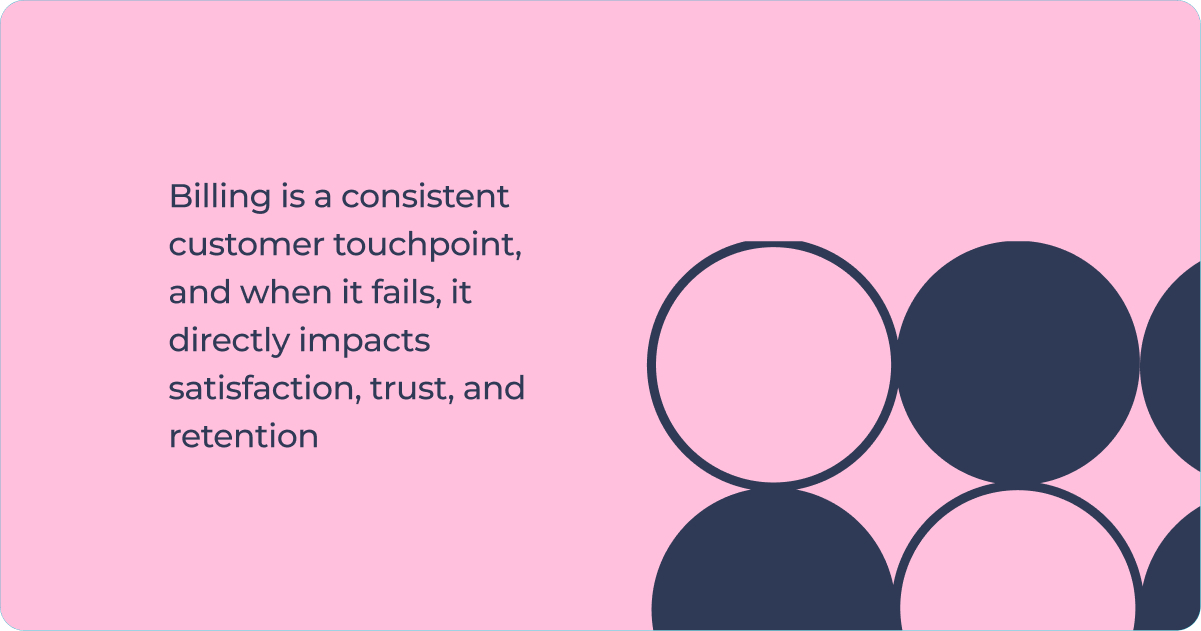Billing Complex Services & Contracts
Monetizing a business is not easy. Because you need to track and charge in a way that helps your customers understand what they pay for.
The more complex your services, the more billing support you need to keep customers happy.
Good Sign was designed for true billing automation.
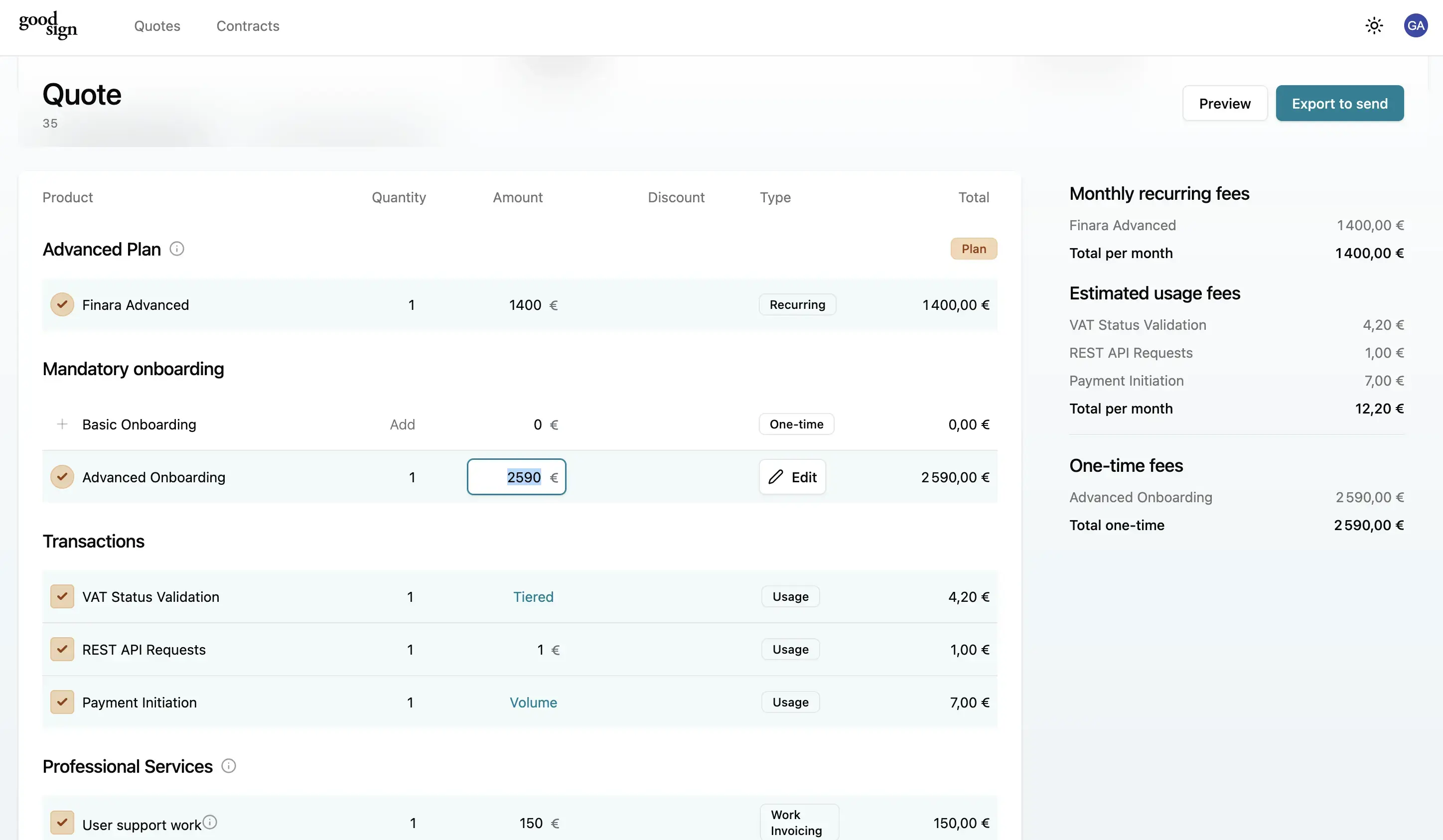

Trusted by:
Support your entire revenue team, from sales to finance
Your company’s revenue passes through many teams—sales to finance—often using their own workflows and software.
It’s easy for complex contract information and billing data to get lost during this transfer, resulting in:
- You billing way less than what you should (lost revenue)
- Or the finance team having to put in manual work to ensure every invoice is accurate and billed on time.

The power to monetize any service and any billing model

Manufacturing & Maintenance
Are you managing massive maintenance contracts? It wouldn’t be unusual for such a contract to be flexible enough to handle:
- Different cost centers or business units
- Levels of service or support
- Various contract durations
Plus, each invoice might be generated based on tiered variables like number of hours, in-warranty vs out-of-warranty parts, consumables, etc.

Financial Services
Financial service providers are constantly evolving, and that’s important to your success in a digital-first market.
This, though, would need your revenue operations to be able to handle:
- Ever-changing pricing models that run simultaneously, with a high volume of transactions.
- Transparent invoicing for customers, especially large enterprise clients.

Logistics Services
The logistics and transportation industry relies on flexible billing to be able to handle highly variable transactions.
Contracts can change depending on the nature of the customer—from large retailers and ecommerce companies to logistics hubs like airports and ports.
Good Sign’s billing automations would support your needs in an industry that needs liquidity to keep things moving.

Healthcare Services
Healthcare services deal with a mix of private and public healthcare infrastructure, global drug and equipment manufacturers, service contracts, and insurance companies.
Then there's regulatory requirements around data, billing and accounting.
Good Sign is designed for such complexity. You can ingest data securely and model it to be able to bill accurately using the right cost center every single time.

Telecommunications
Telecom providers have always excelled in managing subscriptions.
However, the average telecom business now has to offer a much broader selection of products and existing systems are not built to combine and bill such contracts.
Contract-level pricing, contract lifecycle management, billing, and accounting capabilities can be the differentiation in both customer satisfaction and cost efficiency.

Energy & Utilities
Energy and utilities businesses are facing some of the biggest changes they’ve had to deal with in decades.
There’s the push for digitalization that has resulted in updated product offerings. Then there’re changing regulations around environmental protection.
Customers expect new business models that reflect this. And modern agile billing capabilities are core to this digital transformation.
Don’t see your industry?
Good Sign is industry-agnostic. There are two key capabilities that provide value to our customers—the ability to bill complex product offerings and custom contracts, and automation that supports high transaction volumes.
Get in touch to see if we’re a fit for your billing needs.
Real Value Delivered
Good Sign customers focus on increasing their revenues through agile pricing, while plugging revenue leakage and cutting down on man hours and middleware.
Customers have cut down two or more weeks in billing lead-time.
Customers have recorded 90% reduced resource use, while time spent went from days to minutes.
Our customers have processed over 40 billion transactions on our scalable architecture.
End-to-end quote-to-cash process on one platform
You can plug Good Sign into your existing tech stack, where we can handle your entire quote to cash process. It’s built to be modular, supporting sales with a modern CPQ solution, enabling easier sales-to-finance handover, and automated billing that cuts RevOps costs.

A billing engine to handle complexity
We ensure that levels of complexity can be built into your quote-to-cash process. Each charge is automatically generated based on exactly what was agreed on during the sales process, with the ability to handle customized service contracts for your customers.

Rely on faster accounting & better reporting
We model billing data to support heavy automation, and the same data is carried forward for any audit or compliance needs. You can support your financial processes with our near real-time (daily) monitoring capabilities. Plus, there's added transparency for revenue reconciliation—from source system data to individual charges, invoice lines, and financial entries.

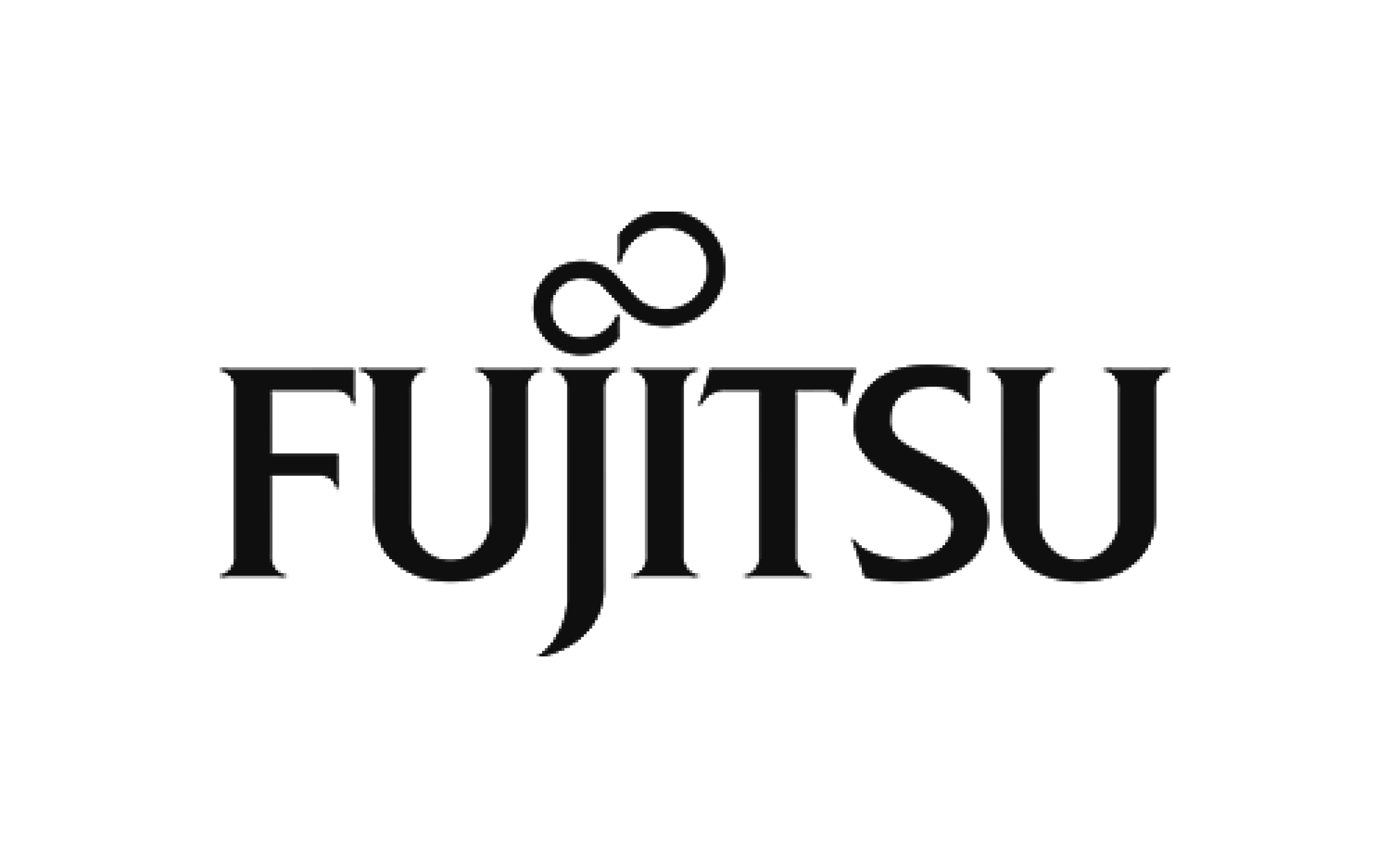
With Good Sign, we have been able to create a solution that is both flexible and customized to our needs.
Kirsi Koski
Development Manager, Customer Success Organization at Fujitsu
Good Sign Impact
Increased revenue
Stopped revenue leakage, improved RevOPs communication
Reduced costs
Eliminated errors in manual invoicing, cut down invoicing costs
Faster upsell
Transparent contracts & usage management supported sales cases
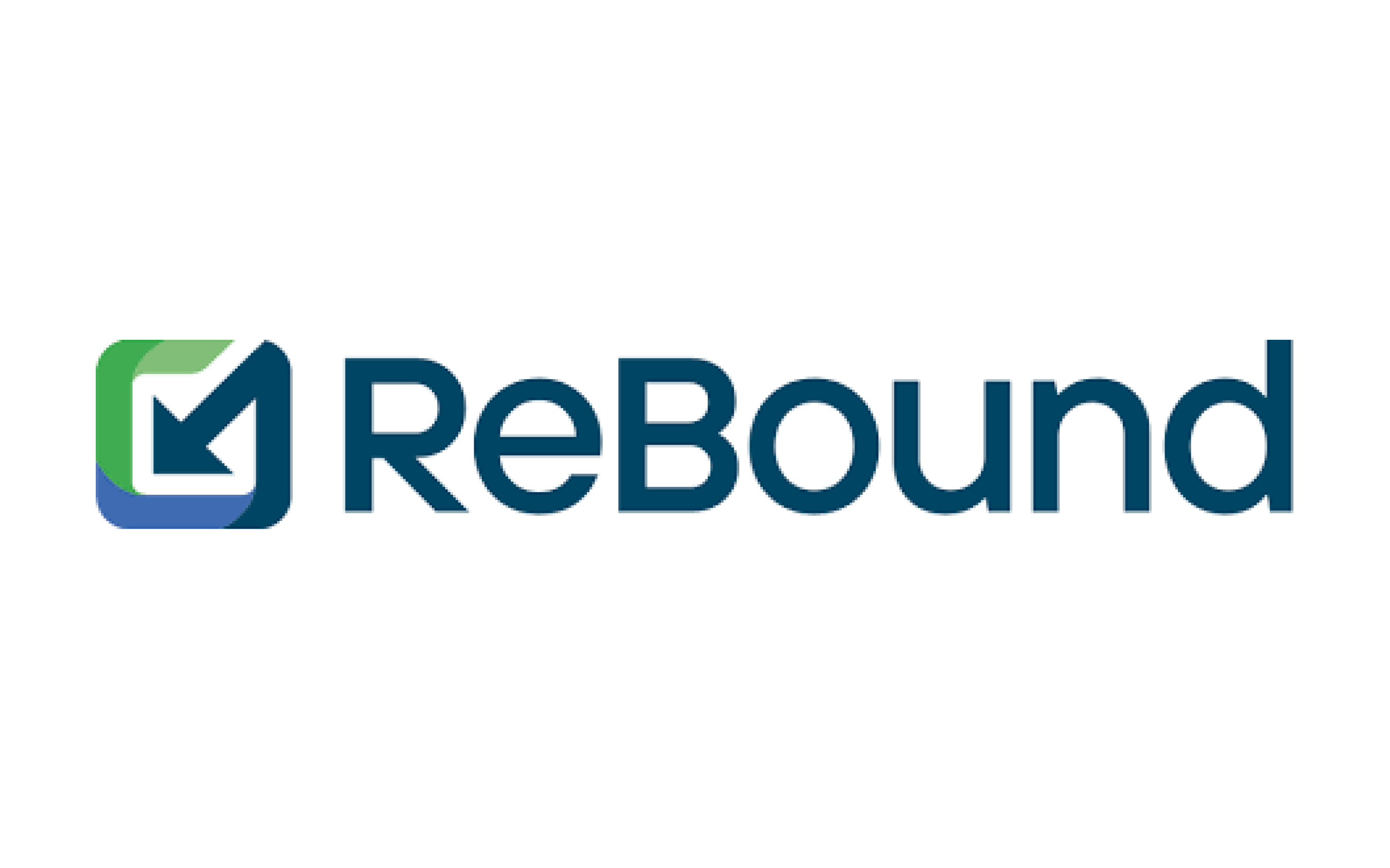
We were looking at a growing complexity of more products, pricing strategies, and more regions. A simplified billing process (enables) us to spend more time in other areas.
Peter van Loenen
Finance Director, Rebound
Good Sign Impact
Reduced man hours
Moved from manual to automated billing & less time spent on billing work.
Higher customer satisfaction
Improved billing accuracy to meet even complex invoicing needs
Lower costs of billing
Eliminated middleware and manual interventions to reduce errors
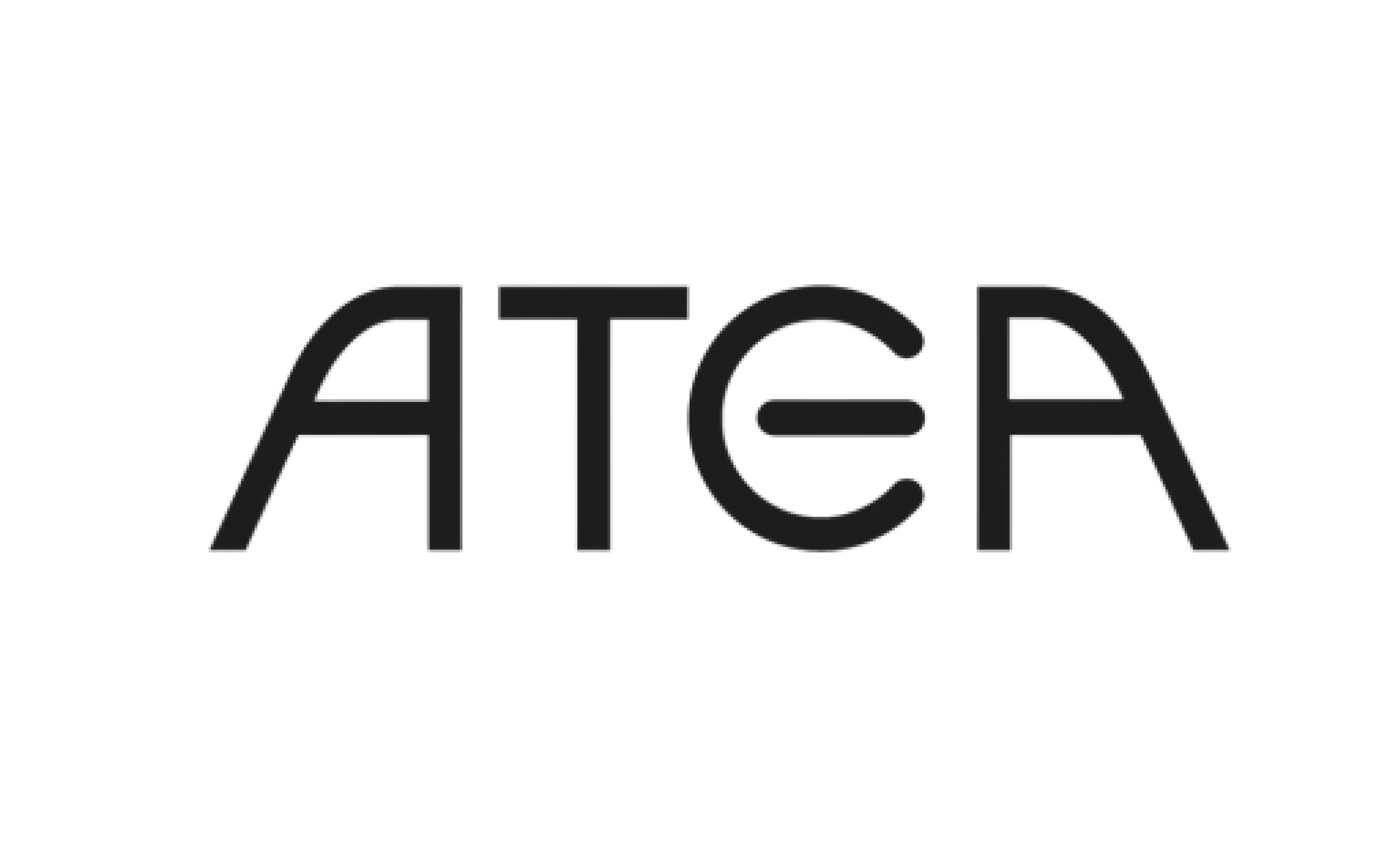
Our billing had increased substantially, so did the chance to make mistakes. With Good Sign, we are prepared for future growth.
Jarno Oksanen
CFO, Atea Finland
Good Sign Impact
Improved data collection
Automated it from multiple sources, making sure there would be no billing errors
Flexible pricing
Pricing and billing is now more flexible to support sales, and is scalable
Plugged revenue leaks
All services automatically recorded and billed without errors
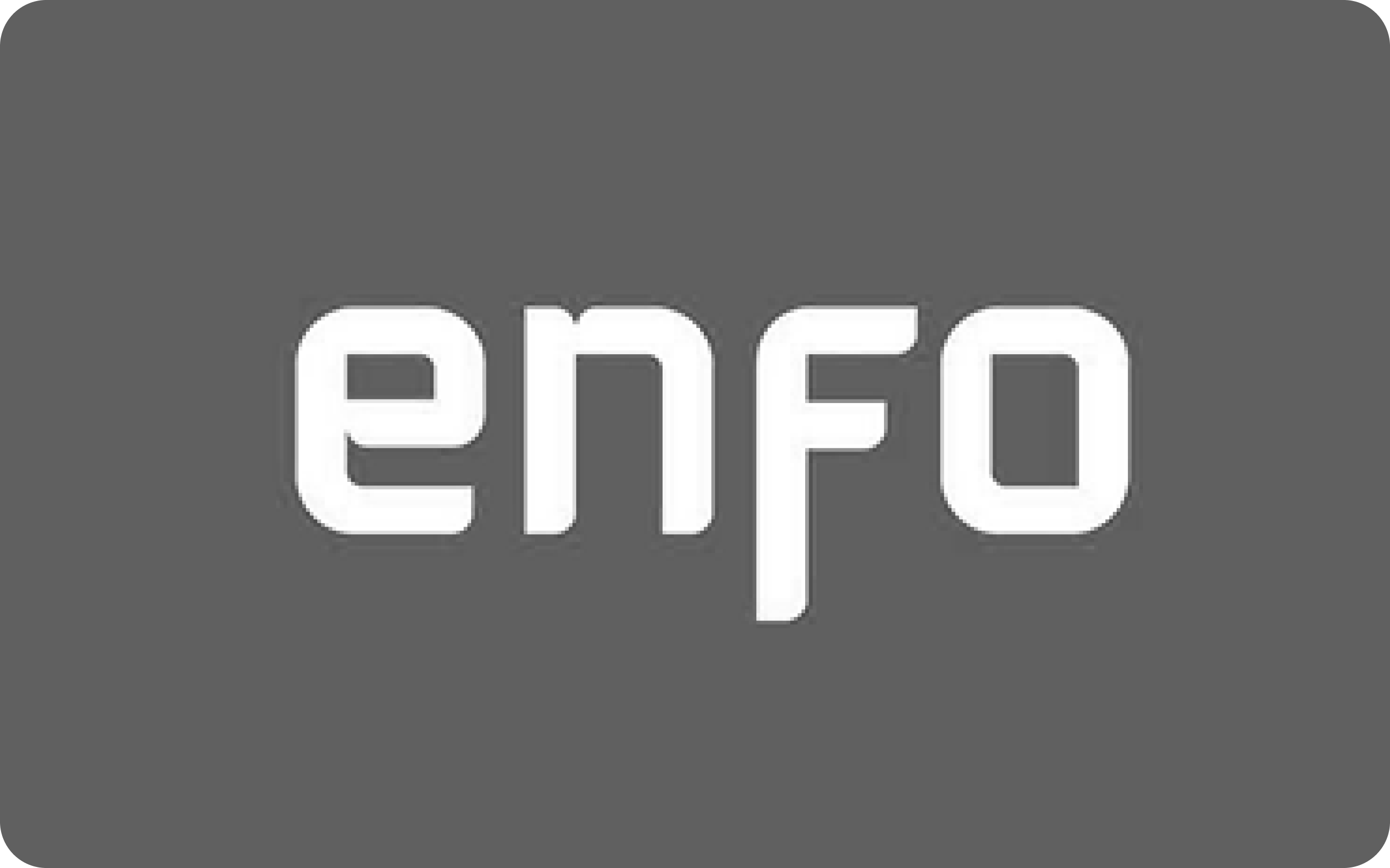
We struggled to find an exceptionally flexible solution to cover our needs in pricing and billing, and Good Sign delivered.
Juhani Pajala
Director of Development, Enfo
Good Sign Impact
Increase in revenue
There was an increase in revenue being collected through transparent billing
Greater pricing flexibility
Automation made it is possible to support customer-specific contract terms
More efficient operations
Less manual work and better billing made Enfo's billing much faster
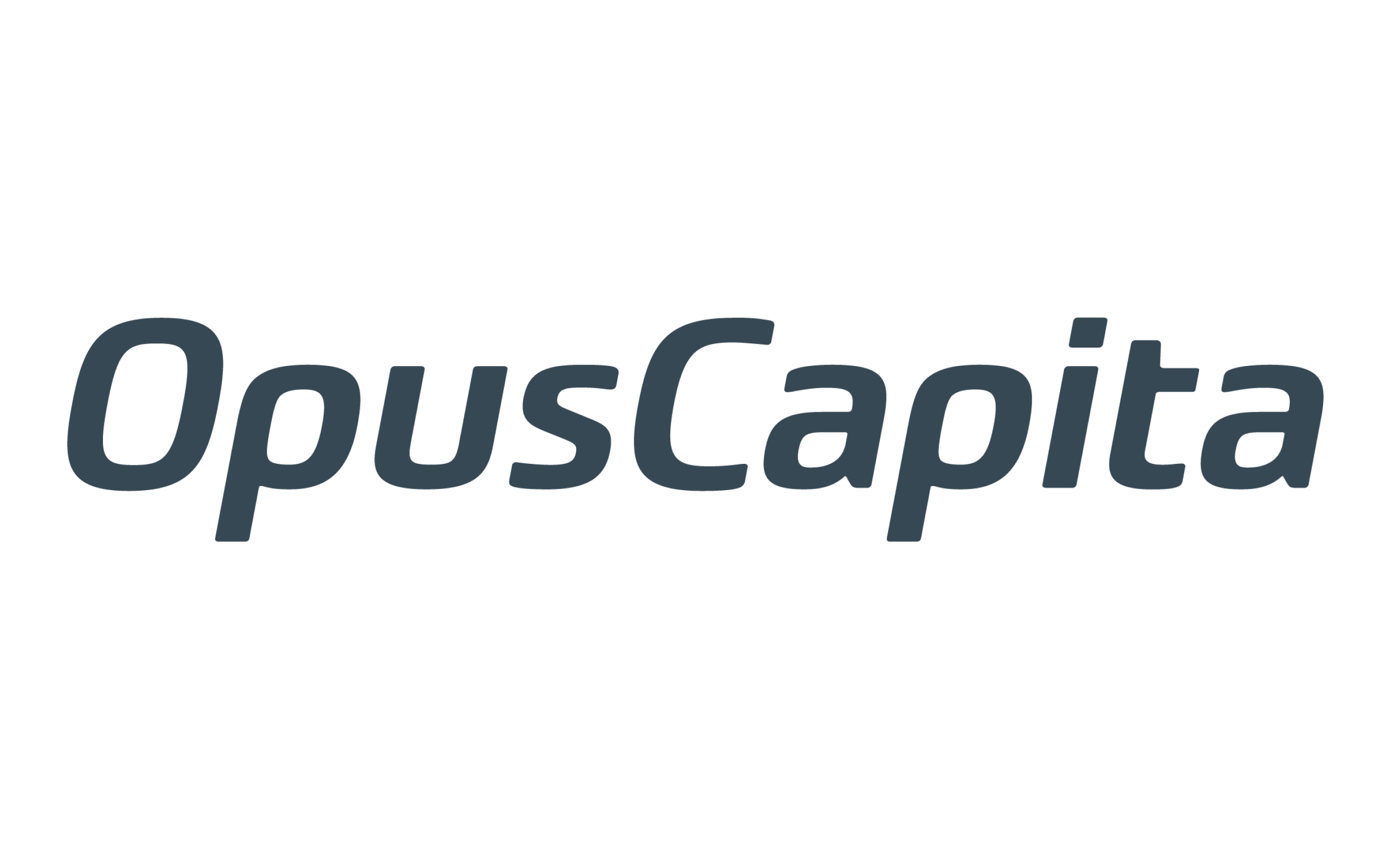
Say goodbye to revenue leaks and billing hassles. Good Sign cares about your success.
Kati Kaivaara
Head of Customer Success, OpusCapita
Good Sign Impact
Reduced manual resources
Cut down manual billing work (man hours saved)
Improved transparency
Made billing & invoicing processes more transparent
Plugged revenue leaks
Good Sign's automation ensured revenue leaks were addressed

We were able to increase revenue by changing the pricing structure, and prevent revenue leakage with the help of Good Sign.
Juho Pakkanen
CFO, Heeros
Good Sign Impact
Eliminated billing errors
Moving from manual billing to automation cut down errors
Plugged revenue leaks
Automation ensured that invoicing was transparent and that there were no gaps in billing
Increased revenue
Heeros were able to update their pricing with no additional effort to increase revenue
Why Choose Good Sign
Tested Enterprise Solution
You gain from 15+ years of solving quote-to-cash problems for enterprise customers.
Designed for Automation
We make it easier for you to rely on software to do effective billing and RevOps.
Flexible to Support Enterprise Sales
We meet even the most demanding pricing and billing requirements, no matter how complex your service offering.
Compliance Guaranteed
Billing without accounting and tax compliance doesn't work, and we guarantee it.
Future-Proof Your Billing
Our foundation in automation using data ensures your billing can take advantage of the latest in tech.

Our Integrations
Frequently Asked Questions
If we launch a new usage-based product, can Good Sign handle all the pricing tiers and custom deals we negotiate?
Yes. Good Sign supports complex usage-based pricing, tiered thresholds, minimum commitments, and custom terms per customer. All of this is managed centrally in the product catalog, and billing is automated based on actual usage data.
Our pricing changes don’t always apply to every customer. Can we roll out updates just for certain segments or contracts?
Yes. Good Sign lets you define pricing rules and exceptions at the customer or contract level. You can target updates by segment, customer type, or any other field you configure.
If we find an error after a pricing update, can we fix it without causing billing chaos?
Yes. Pricing logic is version-controlled and auditable. Corrections can be made without disrupting invoicing. Billing schedules and revenue recognition adjust accordingly, and error tracking is built in.
We want to experiment with new models but worry about breaking our current process. How safe is it to test in Good Sign?
Very safe. You can simulate pricing changes in a test environment before going live. Good Sign lets you preview how changes would affect quoting, billing, and revenue reporting — without impacting active contracts.
How soon after signing up could we realistically run our first real billing cycle?
That depends on your scope, but most customers go live in phases. Our onboarding packages are structured and guided — some teams start billing through Good Sign within weeks. We tailor the rollout based on your existing systems and goals.
What support do we get during and after rollout?
You’ll get a dedicated onboarding team during setup, including integration support and configuration help. After go-live, ongoing support and success services are available to help you scale and optimize.
How much internal IT or development effort is needed to get started?
Minimal. Good Sign uses open APIs and prebuilt connectors for fast integration. Most configuration happens within the platform, not through custom code.
How does Good Sign handle mid-cycle changes, like contract amendments or new services added after a billing cycle starts?
Good Sign tracks contracts and usage continuously. When a service is added or a contract is updated mid-cycle, the platform adjusts the charges automatically. There’s no need for manual corrections or delayed invoicing.
We serve customers with highly detailed, specific reporting needs. Can Good Sign produce custom invoice layouts and reports?
Yes. Good Sign supports fully configurable invoice formats and reporting structures, down to customer- or contract-specific layouts. You can include detailed usage breakdowns, custom billing rules, and any metadata your customers or internal teams require.
If a usage data feed is delayed or needs correction, how does Good Sign reconcile this?
Good Sign allows for corrections and delayed data without breaking the billing flow. It reprocesses updated inputs and ensures the final invoice reflects the accurate and complete data.
How does Good Sign help identify new monetization or upsell opportunities?
By consolidating service usage, pricing rules, and billing performance into one view, Good Sign gives you insights into where services are underbilled, underutilized, or ripe for upsell or expansion.
What safeguards are in place to prevent duplicate charges or missing invoice lines?
Every charge is linked directly to contract rules and usage data. The platform includes built-in validations to prevent overcharging, omissions, and mismatches.
Can we segment billing or reporting for different divisions, resellers, or partners?
Yes. Good Sign supports billing by business unit, region, partner, or any other segment you define. You can apply different pricing models and reporting structures per segment, and automate revenue or cost sharing.
What happens if our services or pricing models become more complex in the future?
You can introduce new pricing structures, service bundles, or billing logic without needing custom development. The rule engine lets you adapt quickly without risking revenue accuracy.
How does Good Sign support us during implementation and beyond?
A dedicated onboarding team helps configure the platform, integrate your systems, and validate your billing flows. After go-live, support continues through ongoing technical assistance, account management, and optimization help.
How much internal IT or development effort is needed to get started?
Minimal. Most billing logic is configured directly in the platform. Good Sign offers pre built connectors and open APIs to plug into your existing systems, and the setup is phased to match your internal capacity.
Read Our Blog
Visit the blog
5 min read
How Good Sign Simplifies Cloud Billing for CSP Teams
It's the last week of the month. Azure usage files just dropped, kicki...
November 19, 2025 by Sam Abraham
